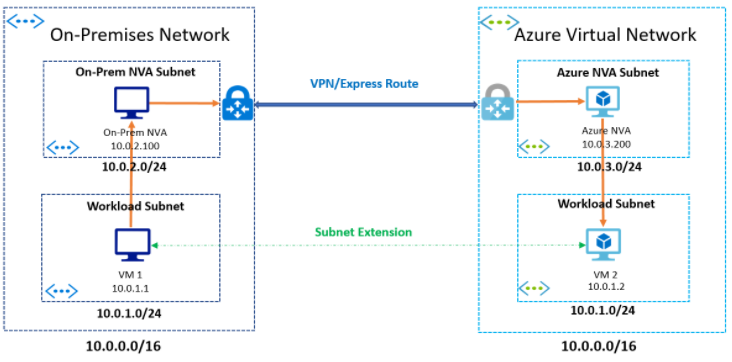Hello @Jesse Gonzalez ,
Welcome to Microsoft Q&A Platform. Thank you for reaching out & hope you are doing well.
You can extend your on-premises subnets to Azure using a layer-3 overlay network based solution. Most solutions use an overlay technology such as VXLAN to extend the layer-2 network using an layer-3 overlay network. The diagram below shows a generalized solution. In this solution, the same subnet exists on both sides that is, Azure and on-premises.

The IP addresses from the subnet are assigned to VMs on Azure and on-premises. Both Azure and on-premises have an NVA inserted in their networks. When a VM in Azure tries to talk to a VM in on-premises network, the Azure NVA captures the packet, encapsulates it, and sends it over VPN/Express Route to the on-premises network. The on-premises NVA receives the packet, decapsulates it and forwards it to the intended recipient in its network. The return traffic uses a similar path and logic.
Below is the article which shows how to extend your on-premises subnets into Azure using Azure Extended Network:
https://learn.microsoft.com/en-us/windows-server/manage/windows-admin-center/azure/azure-extended-network
The network is extended using a bidirectional VXLAN tunnel between two Windows Server 2019 VMs acting as virtual appliances, one running on-premises and the other running in Azure, each also connected to the subnet to be extended. Each subnet that you are going to extend requires one pair of appliances.
To configure ExpressRoute connection to connect the virtual network to your on-premises network, you can refer the below article:
https://learn.microsoft.com/en-us/azure/expressroute/expressroute-workflows
Kindly let us know if the above helps or you need further assistance on this issue.
----------------------------------------------------------------------------------------------------------------
Please "Accept the answer" below if the information helped you. This will help us and others in the community as well.
